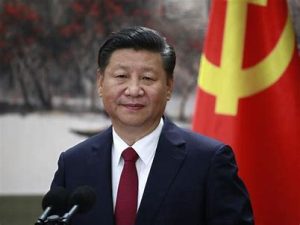In September, the elevation of diplomatic ties between Vietnam and the U.S. to a “comprehensive strategic partnership” sparked widespread speculation among Western analysts and media that Vietnam was aligning itself with the U.S. and participating in an anti-China coalition. However, Chinese President Xi Jinping’s recent two-day visit to Hanoi suggests that claims of a growing rift between China and Vietnam are far from accurate.

Xi, who also serves as the General Secretary of the Communist Party of China, was hosted by Communist Party of Vietnam General Secretary Nguyen Phu Trong and Vietnamese President Vo Van Thuong during his visit. Contrary to the anticipated tensions, the three leaders reaffirmed the profound friendship between their nations and oversaw the signing of over 30 agreements covering diverse fields such as defense, trade, support for each other’s socialist paths, infrastructure development, public security, and joint maritime patrols in the Gulf of Tonkin.
Of particular significance was the signing of a plan for further cooperation on China’s “Belt and Road Initiative” and the “Two Corridors, One Belt” program. Despite often facing criticism in Western media, these Chinese initiatives are substantial infrastructure investment programs that have significantly contributed to the modernization efforts of developing countries globally. Given Vietnam’s plans to invest in a cross-country high-speed rail line, these Chinese programs could play a crucial role in the country’s development.
The joint statement issued at the end of Xi’s visit emphasized the close relationship between China and Vietnam, highlighting their shared socialist path. The statement expressed the intention to further elevate the Vietnam-China Comprehensive Strategic Cooperative Partnership and build a “Vietnam-China Community.” Stressing the close bonds between the two nations as “comrades and brothers,” the leaders envisioned a new stage in their relationship marked by stronger political trust, substantial defense-security cooperation, deeper collaboration, closer multilateral coordination, better management of differences, and joint efforts to contribute positively to the development of the world socialist cause and global peace and progress.
Beyond the bilateral implications, the agreement could potentially contribute to stabilizing tensions in the South China Sea, referred to as the East Sea in Vietnam. The U.S. and its allies have consistently sought to exploit any signs of instability in the region to expand their military presence. Xi’s visit and the strengthening ties between China and Vietnam could serve as a counterbalance to external efforts to heighten tensions in the South China Sea.
Despite receiving limited coverage in the U.S. media, Xi’s visit to Hanoi challenges prevailing Western narratives about deep divisions between China and Vietnam. This diplomatic engagement may serve to dispel commonly repeated, albeit frequently debunked, Western talking points regarding strained relations between the two nations.

